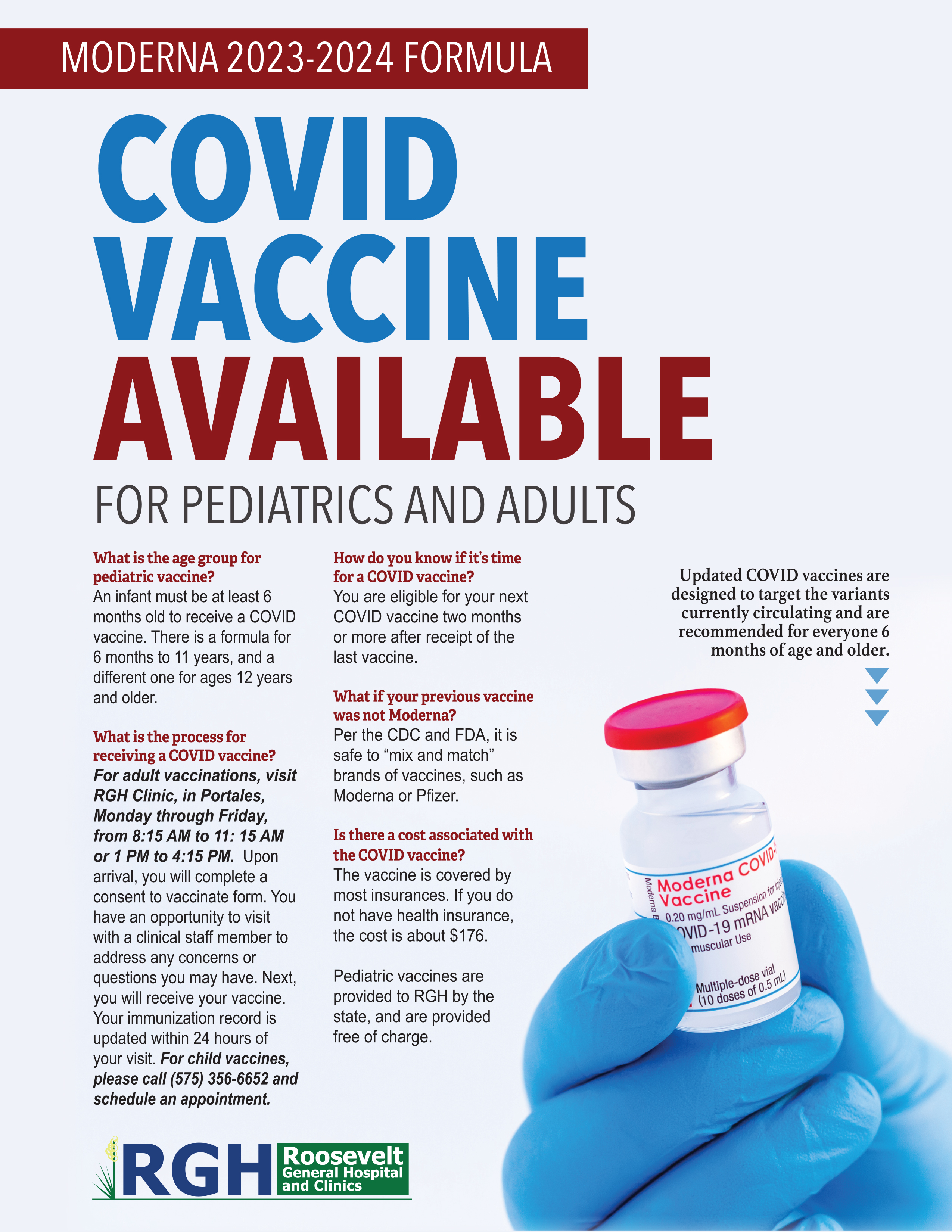Office of the
Chief Economist
Agricultural Marketing Service
Farm Service Agency
Economic Research Service
Foreign Agricultural Service
WASDE – 612 Approved by the World Agricultural Outlook Board May 12, 2021
WHEAT: The initial outlook for 2021/22 U.S. wheat is for smaller supplies, higher domestic use,
lower exports, and reduced stocks. Supplies are projected down 3 percent from 2020/21 on lower
carry-in stocks offsetting higher production and imports. All wheat production is projected at 1,872
million bushels, up 3 percent from last year on higher harvested acreage and yields. The all wheat
yield is projected at 50.0 bushels per acre, up 0.3 bushels. The first 2021 NASS survey-based winter
wheat production forecast of 1,283 million bushels is up 10 percent from 2020, on increased Hard
Red Winter and Soft Red Winter production more than offsetting lower White Winter production.
Total 2021/22 domestic use is projected 6 percent higher on higher feed and residual and food use.
A reduced wheat-corn price spread is expected to raise wheat feeding in the June-August quarter
with annual feed and residual use projected at 170 million bushels, the highest since 2013/14. Food
use is projected modestly higher at 963 million bushels, up 3 million from a revised 2020/21 estimate
of 960 million. Exports are projected at 900 million bushels, down 65 million from the revised
2020/21 exports. Several major exporters are projected to have larger supplies in 2021/22 and
relatively high U.S. prices are expected to reduce U.S. competitiveness. Projected 2021/22 ending
stocks are 11 percent lower than last year at 774 million bushels, the lowest level in seven years.
The projected 2021/22 season-average farm price is $6.50 per bushel, up $1.45 from last year’s
revised price on reduced stocks and significantly higher U.S. corn prices.
The initial global wheat outlook for 2021/22 is for larger supplies, higher consumption, increased
trade, and marginally higher stocks. Supplies are projected to increase 8.1 million tons to 1,083.7
million with production projected at a record 789.0 million tons. Higher production for Argentina, the
EU, UK, Morocco, Ukraine, and the United States is expected to more than offset reductions for
Australia and Canada. Russia’s production of 85.0 million tons is similar to last year’s record on
increased winter wheat area. Projected 2021/22 world consumption is raised 7.8 million tons to a
record 788.7 million, primarily on higher food, seed, and industrial (FSI) use, continuing a long-term
uptrend. Wheat feed and residual use is projected up relatively less than FSI as increases in the EU,
UK, Russia, and the United States are partially offset by decreased feed use for China, Canada, and
Australia.
Projected 2021/22 global trade is a record 202.4 million tons, up 2.8 million from last year on
increased exportable supplies. Imports are projected to rise, primarily on increased demand from
Algeria, Indonesia, the EU, and Middle East region. China’s imports are projected slightly lower at
10.0 million tons but remain large with stocks continuing to decline despite higher production.
Imports are also projected lower for Pakistan and Morocco on increased supplies. Russia is
projected as the leading 2021/22 wheat exporter at 40.0 million tons. Argentina, the EU, and Ukraine
exports are also projected higher while Australia, Canada, and the United States are lower.
Projected 2021/22 world ending stocks are modestly higher at 295.0 million tons with China
accounting for 48 percent of the total.
COARSE GRAINS: The U.S. feed-grain outlook for 2021/22 is for greater production and domestic
use, lower exports, and increased ending stocks. The corn crop is projected at 15.0 billion bushels,
up from last year on higher area and a return to trend yield. The yield projection of 179.5 bushels per
acre is based on a weather-adjusted trend assuming normal planting progress and summer growing
season weather, estimated using the 1988-2020 time period. With beginning stocks that are down
sharply from a year ago, total corn supplies are forecast to increase modestly to 16.3 billion bushels. WASDE-612-2
Total U.S. corn use in 2021/22 is forecast to decline relative to a year ago as greater domestic use is
more than offset by lower exports. Food, seed, and industrial (FSI) use is projected to rise 220
million bushels to 6.6 billion. Corn used for ethanol is projected to increase based on expectations of
higher U.S. motor gasoline consumption. Sorghum FSI is unchanged from a year ago as
expectations of robust sorghum exports to China limit available domestic supplies. Corn feed and
residual use is unchanged, as a larger crop is offset by increased corn used for ethanol and higher
expected season-average farm prices received by producers.
U.S. corn exports are forecast to decline 325 million bushels in 2021/22. Unfavorable production
prospects are forecast to limit exports out of Argentina and Brazil during 2020/21 (local marketing
years beginning March 2021 and ending February 2022), supporting U.S. exports during the first half
of 2021/22. However, a 335-million-bushel increase in the combined corn exports for Ukraine and
Russia in 2021/22 is expected to increase competition for the United States, reducing the forecast
U.S. share of global corn trade from a year ago.
With total U.S. corn supply rising and use declining, 2021/22 U.S. ending stocks are up 250 million
bushels from last year. Stocks relative to use at 10.2 percent would be above a year ago but still
below the average seen during 2016/17 to 2019/20. The season-average corn price received by
producers in 2021/22 is projected at $5.70 per bushel, up $1.35 from a year ago when much of the
crop was marketed at lower prices.
The global coarse grain outlook for 2021/22 is for record production and use, and larger ending
stocks. World corn production is forecast record high, with the largest increases for the United
States, Brazil, China, Ukraine, and Argentina. Global corn use is expected to grow 3 percent, with
foreign consumption up 3 percent. Global corn imports are projected to increase 3 percent. Notable
increases in corn imports include the EU, Turkey, Iran, Japan, and Mexico. Global corn ending
stocks are up 3 percent from a year ago, with expected increases for the United States and foreign
countries. Excluding China, corn ending stocks are up 10 percent relative to a year ago.
For China, total coarse grain imports are forecast at 46.3 million tons, up 3.1 million from 2020/21
and if realized would be record high. Expectations are for continued relatively high corn and other
energy feedstuff prices in China, despite an increase in corn production. Among the individual
coarse grains, corn imports are forecast at 26.0 million tons, barley at 10.0 million, and sorghum at
10.0 million.
RICE: The initial 2021/22 outlook for U.S. rice is for reduced supplies, exports, domestic use, and
ending stocks. Total 2021/22 supplies are projected at 285.0 million cwt, down 2 percent from last
year on lower production more than offsetting higher imports and significantly greater beginning
stocks. All rice production is projected at 203.6 million cwt, down 11 percent from the previous year
on reduced harvested area. The 2021/22 projected all rice yield is 7,651 pounds per acre, up 32
pounds from last year. Total 2021/22 imports are a record 38.5 million cwt with increases in both
long-grain and medium- and short-grain. Total 2021/22 U.S. use is projected at 244.0 million cwt,
down 2 percent from last year with both domestic and residual use and exports lower. Total domestic
and residual use is projected slightly lower at 156.0 million cwt with reduced supplies but still is the
second largest on record. Total exports are projected at 88.0 million cwt on reduced supplies, higher
U.S. prices, and increased export competition. All rice 2021/22 ending stocks are projected at 41.0
million cwt, down 4 percent from last year. The 2021/22 all rice season-average farm price (SAFP) is
projected at $14.20 per cwt, up $0.30 from the 2020/21 revised SAFP.
World production for 2021/22 is projected at 505.4 million tons, a record, and up slightly from last
year’s record. The largest production increases are expected from China, Thailand, and Bangladesh
more than offsetting declines in India and the United States. Global 2021/22 rice consumption is
projected at a record 513.3 million tons, up nearly 8.0 million from the previous year with most of this WASDE-612-3
increase due to China with more rice expected for feed use. Global exports for 2021/22 are projected
at 46.5 million tons, slightly greater than last year as higher exports from Thailand, Paraguay, Burma,
Cambodia, and Pakistan more than offset reductions for India, Vietnam, and the United States.
Projected 2021/22 world ending stocks are 168.0 million tons, down 7.9 million from last year with
China and India accounting for most of this reduction.
OILSEEDS: The 2021/22 outlook for U.S. soybeans is for lower supplies, lower exports, higher
crush, and higher ending stocks compared with 2020/21. The soybean crop is projected at 4.4 billion
bushels, up 270 million from last year on increased harvested area and trend yields. With lower
beginning stocks, soybean supplies are projected down 3 percent from 2020/21. Total U.S. oilseed
production for 2021/22 is forecast at 130.3 million tons, up 7.9 million from 2020/21.
U.S. soybean crush for 2021/22 is projected at 2.2 billion bushels, up 35 million from the 2020/21
forecast, reflecting favorable crush margins. Soybean oil is expected to hold a higher share of the
crush value as prices are buoyed by increased use of soybean oil as a feedstock in an expanding
renewable diesel industry. The soybean oil balance sheet line entitled “Biodiesel” is replaced by
“Biofuel” this month. The biofuel line includes soybean oil used for both biodiesel and renewable
fuels as reported in the U.S. Energy Information Administration’s Monthly Biofuels Capacity and
Feedstocks Update, which replaced the Monthly Biodiesel Production Report. Prior year estimates
for renewable fuel are based on data from the U.S. Environmental Protection Agency, the California
Air Resource Board, and capacity information from industry.
U.S. soybean exports are forecast at 2.1 billion bushels, down 205 million from 2020/21. With lower
soybean supplies and higher crush, the U.S. export share of global soybean trade is expected to
decline to 33 percent from 36 percent in 2020/21. U.S. soybean ending stocks for 2021/22 are
projected at 140 million bushels, up 20 million from the 2020/21 forecast. With prices for fall delivery
above $14.00 per bushel in some locations, the 2021/22 U.S. season-average soybean price is
projected at $13.85 per bushel, up $2.60 from 2020/21. Soybean meal prices are forecast at $400
per short ton, down $5.00 from the revised forecast for 2020/21. Soybean oil prices are forecast at
65.0 cents per pound, up 10 cents from the revised 2020/21 forecast.
Global oilseed supplies for 2021/22 are projected to increase 3 percent from 2020/21 to 732.4 million
tons, with higher prices incentivizing an expansion of oilseed area and higher sunflowerseed
production after the prior season’s yield-related declines. Global soybean production is forecast up
22.6 million tons to 385.5 million. Brazil’s crop is forecast at a record 144.0 million tons while
Argentina’s crop rises 5.0 million tons to 52 million. Global production of high-oil content seeds
(sunflowerseed and rapeseed) is projected up 6 percent from 2020/21 on a recovery of
sunflowerseed production for Ukraine, Russia, and the EU and increased canola for Canada.
Global soybean exports are expected to increase 1 percent to 172.9 million tons. The U.S. share of
global exports is forecast to decline while Brazil’s share increases from 50 percent in 2020/21 to 54
percent in 2021/22. China’s imports are forecast to increase 3 million tons to 103 million. Global
soybean ending stocks are projected at 91.1 million tons, up 4.6 million, with most of the increase in
China and Brazil. Global vegetable oil consumption for 2021/22 is projected at 213.2 million tons, up
3.0 percent, led by increases for China and the United States. Global vegetable oil ending stocks are
projected at 22.4 million tons, down 3 percent from 2020/21 and the lowest in 11 years.
SUGAR: U.S. sugarbeet production for 2021/22 is projected at 35.140 million tons with yield forecast
at 30.71 tons/acre and area harvested projected at 1.144 million acres. National yield is projected on
analysis of historical regional trends and also reflects excellent planting progress through early May.
Assuming average levels of beet pile shrink and slicing recovery, beet sugar production is projected
at 5.225 million short tons, raw value (STRV). Cane sugar production for 2021/22 is projected at
4.085 million STRV. Production levels in Florida and Texas are expected to be close to 2020/21
levels and production in Louisiana is down from the 2020/21 record but still strong at 1.850 million WASDE-612-4
STRV. Florida cane sugar for 2020/21 is down 70,000 STRV to 2.100 million on lower sugar yields
estimated by processors.
TRQ imports for 2021/22 are projected at 1.387 million STRV with levels set at minimum levels
consistent with the WTO and FTA bindings and with a TRQ shortfall projected at 99,208. High-tier
tariff imports for 2021/22 are projected at 50,000 STRV. Imports from Mexico for 2021/22 are
projected at 964,775 STRV. For 2020/21, imports from Mexico are up by 50,000 STRV to reflect the
recent increase in the “Other Sugars” Export Limit. The raw sugar TRQ shortfall is increased to
146,854 STRV. Deliveries for 2021/22 are projected at 12.320 million STRV, flat with levels
estimated for 2020/21. Ending stocks for 2021/22 are residually projected at 1.502 million STRV,
implying a stocks-to-use ratio of 12.25 percent.
Mexico production for 2021/22 is projected at 5.809 million metric tons (MT). Below average yields
are projected due to poor soil conditions from ongoing drought and low area replacement turnover.
Production for 2020/21 is reduced by 75,000 MT to 5.825 million on a combination of lower area and
reduced sugar yields. Deliveries of sugar and high fructose corn syrup are projected to decline in
both 2020/21 and 2021/22 due to government actions to curb consumption of high-calorie foods,
weakness in the economy, and high inflation. Ending stocks for both 2020/21 and 2021/22 are set
equal to 2.5 months of forecast domestic sugar deliveries before the start of the succeeding
sugarcane harvest. Total exports are residually projected but exports to the United States are
projected at the expected level of U.S. Needs, which provisionally assumes a level for the 2021/22
U.S. additional specialty TRQ at the same level as 2020/21; that is, 140,000 MT, raw value.
LIVESTOCK, POULTRY, AND DAIRY: Total U.S. red meat and poultry production for 2022 is
forecast above 2021 as higher pork and poultry production more than offset lower beef production.
Beef production is forecast lower on smaller year-over-year slaughter levels. Pork production is
forecast to increase primarily on growth in farrowings and pigs per litter. Broiler production is
forecast above 2021 as producers respond to higher prices this year and into 2022, but growth will be
tempered by higher feed prices. Turkey production is forecast to increase in response to favorable
prices, but higher feed prices will likely dampen the rate of expansion. Egg production is forecast
higher on stronger prices in 2021. Total beef and pork exports are little changed from 2021. Beef
imports are slightly lower, but pork imports are projected to increase slightly. Broiler and turkey
exports are forecast higher on expected gains in foreign demand. Cattle prices are forecast above
2021 on expected tightening of supplies and continued firm demand. Hog and broiler prices are
forecast lower with increased production. Turkey and egg prices are forecast higher on strength in
demand.
The total red meat and poultry production forecast for 2021 is increased from last month. Beef
production is raised on higher fed and non-fed cattle slaughter. Pork production is reduced slightly
on lighter carcass weights. Broiler production is reduced on first-quarter slaughter data; no changes
are made to the outlying quarters. Turkey production is lowered, reflecting recent hatchery data.
Egg production is lowered on hatchery and flock data. Beef, pork, and broiler exports are raised on
recent trade data and expectations of stronger growth to a number of key markets. Turkey exports
are reduced slightly. Beef imports are raised as lower imports from Australia are partly offset by
product from other suppliers. The annual cattle price forecast is little changed from last month. Hog,
broiler, and turkey prices are raised each quarter on prices to date and expectations of demand
strength in the second half of the year.
Milk production for 2022 is forecast higher than 2021 as continued gains in milk per cow more than
offset a slight reduction in the dairy cow herd. Commercial exports on a fat basis are forecast lower
as higher domestic butter prices reduce competitiveness in world markets. However, strong global
demand and weaker domestic prices for cheese, nonfat dry milk (NDM), and whey are expected to
support slightly higher exports on a skim-solids basis. Fat basis imports are forecast lower on lower
expected imports of butterfat products and cheese, while skim-solids basis imports are expected to WASDE-612-5
decline mainly on lower cheese imports. Butter prices are forecast higher, but cheese prices are
forecast lower as an increased proportion of milk is expected to move into cheese production. NDM
and whey prices are lowered reflecting competition in international markets. The Class III price is
lowered on weaker cheese and whey prices. The Class IV price is lowered as lower NDM more than
offsets higher butter prices. The 2022 all milk price is forecast at $18.50 per cwt.
The 2021 milk production forecast is raised on higher cow inventories. Fat basis exports are raised
on higher expected exports of butterfat products. The skim-solids basis export forecast is lowered as
weaker-than-previously expected NDM/SMP sales more than offset higher expected whey-product
exports. Fat basis and skim-solids basis import forecasts are raised from last month on recent import
data and higher expected second-quarter butterfat imports. Cheese, NDM, and whey prices are
raised from the previous month, but butter is lowered. Both Class III and Class IV prices are raised.
The 2021 all milk price is forecast at $18.95.
COTTON: U.S. cotton production in 2021/22 is projected to rise 2.4 million bales, but total supply is
projected at its lowest in 5 years, and both exports and ending stocks are forecast lower than in
2020/21. Production is anticipated at 17.0 million bales, with 12.0 million planted acres as indicated
in Prospective Plantings, abandonment projected above the average of the past 5 years, and average
yields. Exports are expected to fall 1.6 million bales, to 14.7 million. Domestic mill use is projected
to rise 200,000 bales, to 2.5 million, and ending stocks are 200,000 bales lower to 3.1 million. The
upland cotton farm price is 75 cents per pound, 10 percent higher than in 2020/21.
For 2020/21, U.S. cotton production is reduced slightly from last month. The export forecast is
increased 500,000 bales to 16.25 million as the expected U.S. share of world trade rises, and ending
stocks are estimated 600,000 bales lower than in April, at 3.3 million.
The world 2021/22 cotton projections show global supply about unchanged from a year earlier—as
rising production offsets lower beginning stocks—and falling ending stocks, as consumption rises to
its highest in 4 years. Production is projected at 119.4 million bales, 6.3 million higher than in
2020/21. Higher production is expected in Brazil, Australia, Mali, Pakistan, India, and Turkey; a 2.0-
million-bale decline is projected for China’s crop. Global consumption is forecast to rise 3.5 percent
to 121.5 million bales as global income growth remains strong. Global ending stocks are expected to
shrink by 2.2 million bales, to 91.0 million, equivalent to 75 percent of use.
For 2020/21, global production saw little net change from April, but beginning stocks and
consumption are projected lower, and estimated global ending stocks are 300,000 bales lower.
Indian 2019/20 and 2020/21 production is reduced by a total of 1.2 million bales. China’s 2020/21
crop is raised 500,000 bales, reflecting ginning and inspection data from Xinjiang. Global
consumption is forecast 439,000 bales lower this month, as India’s recent textile exports and
economic disruption from COVID-19 reduced expected mill use there by 800,000 bales.
Approved by the Secretary of Agriculture and the Chairman of the World Agricultural Outlook Board,
Mark Jekanowski, (202) 720-6030. This report was prepared by the Interagency Commodity
Estimates Committees.
APPROVED BY:
SETH MEYER
SECRETARY OF AGRICULTURE DESIGNATEWASDE-612-6
INTERAGENCY COMMODITY ESTIMATES COMMITTEES
Note: The World Agricultural Outlook Board reviews and approves the World Agricultural Supply and
Demand Estimates (WASDE) report. The Board’s analysts chair the Interagency Commodity
Estimates Committees (ICECs) that prepare the monthly report.
Wheat: Mark Simone, ICEC Chair, WAOB, mark.simone@usda.gov
Jennifer Bond, ERS; Graham Soley, FAS; Pete Riley, FPAC.
Rice: Mark Simone, ICEC Chair, WAOB, mark.simone@usda.gov
Nathan Childs, ERS; Rachel Trego, FAS; Vidalina Abadam, FPAC.
Feed Grains: Michael Jewison, ICEC Chair, WAOB, michael.jewison2@usda.gov
Michael McConnell, ERS; Yoonhee Macke, FAS; Sharon Raszap, FPAC.
Oilseeds: Keith Menzie, ICEC Chair, WAOB, keith.menzie@usda.gov
Mark Ash, ERS; Bill George, FAS; Gustavo Ferreira, FPAC.
Cotton: Stephen MacDonald, ICEC Chair, WAOB, stephen.macdonald3@usda.gov
Leslie Meyer, ERS; James Johnson, FAS; Kent Lanclos, FPAC.
Sugar: Stephen Haley, ICEC Chair, WAOB, stephen.haley2@usda.gov
Andrew Sowell, ERS; Souleymane Diaby, FAS; Barbara Fecso, FPAC.
Meat Animals: Shayle Shagam, ICEC Chair, WAOB, shayle.shagam@usda.gov
Sherry Wise, AMS; Mildred Haley, ERS; Jacob Vuillemin, FAS; Georgi Gabrielyan, FPAC.
Poultry: Shayle Shagam, ICEC Chair, WAOB, shayle.shagam@usda.gov
Peyton Ferrier, AMS; Grace Grossen, ERS; Claire Mezoughem, FAS; Georgi Gabrielyan,
FPAC.
Dairy: Shayle Shagam, ICEC Chair, WAOB, shayle.shagam@usda.gov
Carolyn Liebrand, AMS; Jerry Cessna, ERS; Paul Kiendl, FAS; Georgi Gabrielyan, FPAC.
In 2021, the WASDE report will be released on Jun 10, Jul 12, Aug 12,
Sep 10, Oct 12, Nov 9, and Dec 9.






























